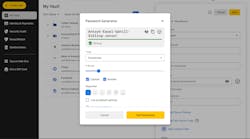Remote video monitoring (RVM) puts security where you need it and there isn’t a customer around who doesn’t want to save labor, time and money by implementing this type of solution. The next few years look promising for the RVM market, which is forecast to grow by nearly 20 percent a year to reach $46 billion by 2013, according to IMS Research.
One problem plaguing RVM stations is false alarms. Some 94 to 98 percent of all alert activations are estimated to be caused by human error, extraneous objects and environmental effects. We all know this is the case and the penalties include false alarms fines, threat of non-response and overall complacency in the implementation of the system by personnel. Video streaming also causes an enormous strain on bandwidth.
On the plus side, video analytics alleviates monitoring tasks, reduces information overload and filters out irrelevant activities, enabling more effective surveillance, better detection, instant visual verification and fewer false alarms. Event-driven software is proactive and presents RVM stations with a solution which can be retrofitted into any existing analog installation. Combined with edge devices, video analytics offers RVM stations a simple, cost-effective solution that efficiently detects intruders, provides video verification, minimizes costly false alarms, ensures faster response time, reduces bandwidth consumption and can be remotely configured and maintained. It can be immediately implemented into existing analog CCTV installations through a simple video-in, video-out scheme, running the video feed for analysis through the intelligent encoders.
When smart cameras and encoders process images at the edge, they record or transmit only important events. Other video analytics architectures transmit or record all video processed, including inactive streams. Since video is transmitted by analyzing and detecting without network sharing of image processing resources, edge devices significantly reduce bandwidth consumption.
Edge-based video analytics can connect directly with dry contact devices such as alarms, gas leak detectors, fire sprinklers and access control on doors and windows. Typically in RVM stations, each subscriber is allotted a time slot during which the user reviews video feed from the site or examines the cameras when an alarm is triggered. With edge-based video analytics, video pops up directly to the screen as soon as an event occurs, showing exactly what is happening. In addition, edge devices can be configured and maintained remotely, reducing the need for onsite visits, providing clients with faster service while reducing costs at both ends.
Remote guard tours
Video analytics can play a vital role in remote guard patrols. A PTZ camera equipped with intelligent video can be programmed to monitor an area by moving from one preset to another, scanning each preset for human or car motion and automatically tracking it. This is an ideal solution for large areas and/or budgets that cannot afford many fixed cameras, since the PTZ unit covers a larger area. Guards can log on to a site to check particular cameras and also receive video alerts when a predefined analytics rule is violated. Similarly, remote “look-ins” can be configured to randomly move around a site according to a custom-designed schedule. Other remote applications include a “visual escort,” where, for example, an employee heading to an empty parking lot late at night can make a phone request to be accompanied by a camera/monitoring guard. The edge devices’ built-in audio inputs and outputs can also be used to broadcast warnings that deter detected trespassers.
Many of the best technologies available today originated in military labs and testing grounds. A video analytics system that has passed the harshest tests in the most difficult terrains is obviously suitable for high-risk sites. Obtaining references from actual system installations around the world is imperative. The more sites the system has been installed at, the more diversified is the manufacturer’s experience in dealing with myriad detection scenarios which you may ultimately face.
John Whiteman is president, Americas, for ioimage. Whiteman has more than 20 years security industry experience.

